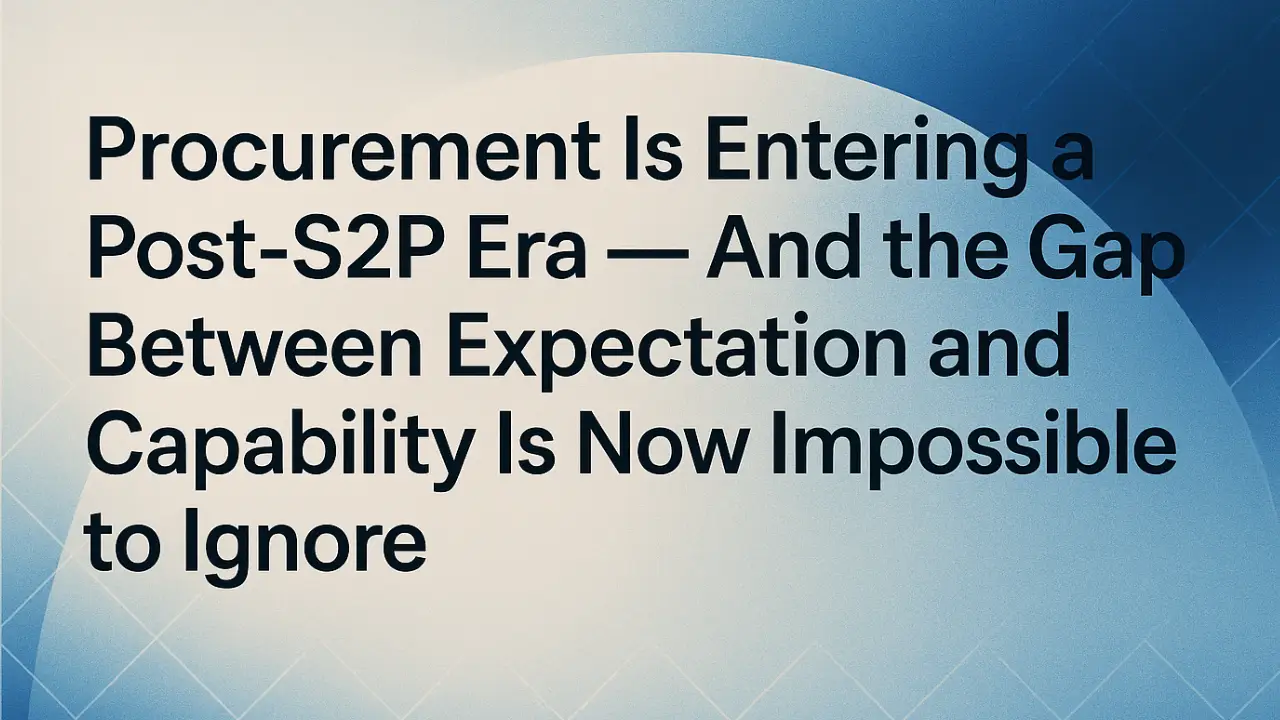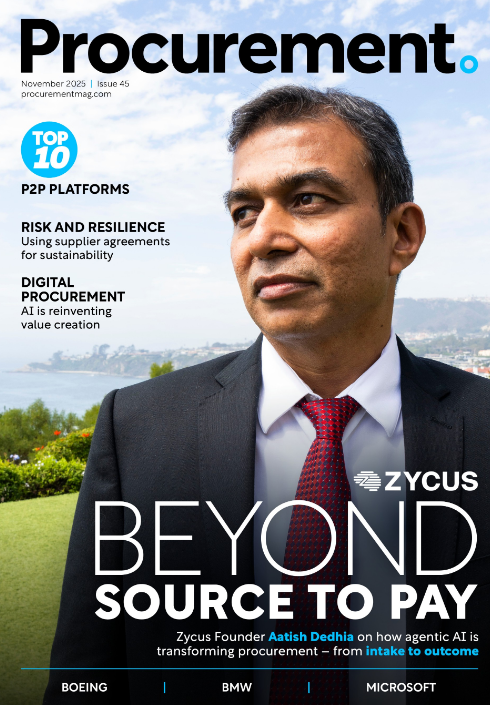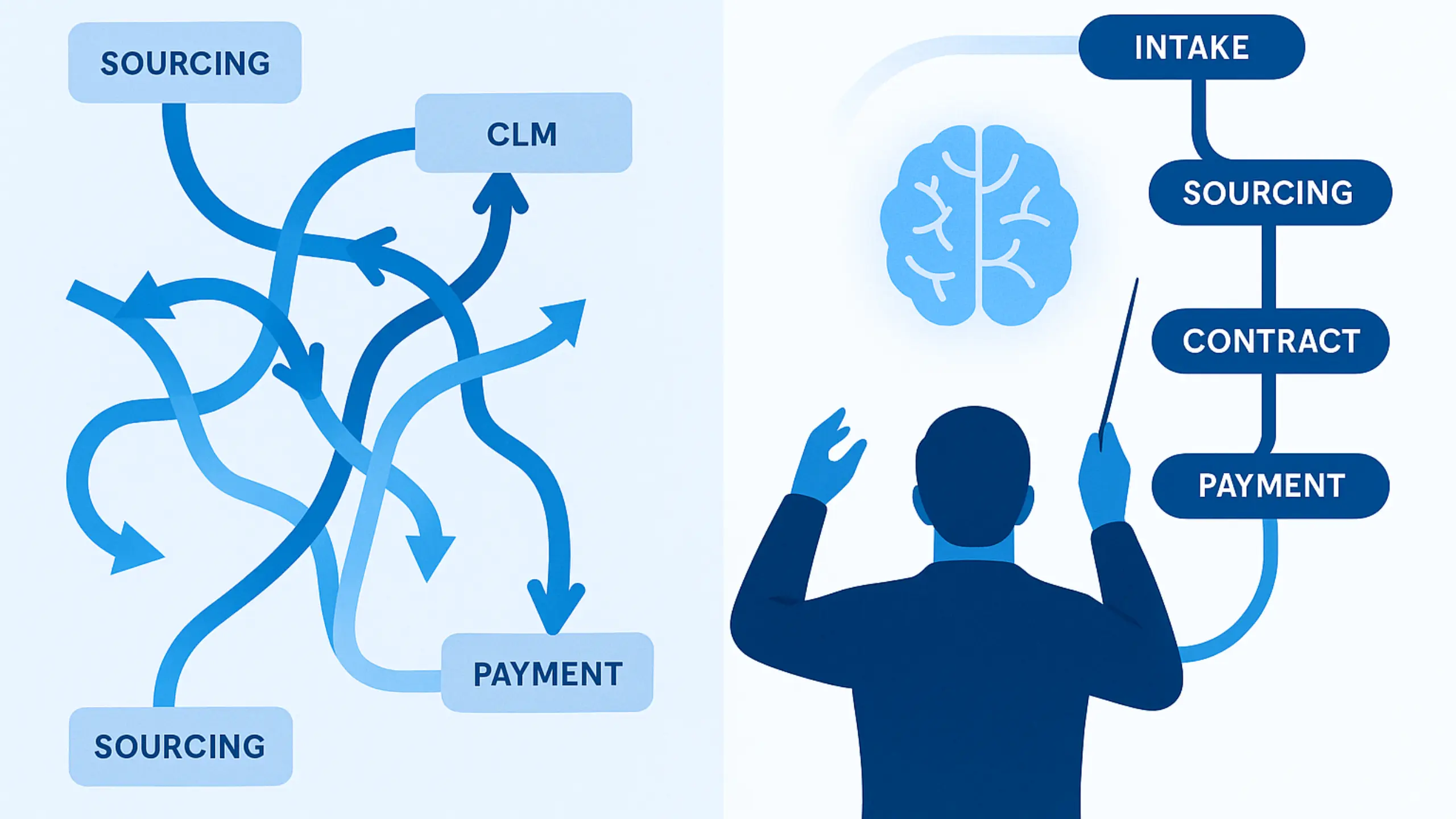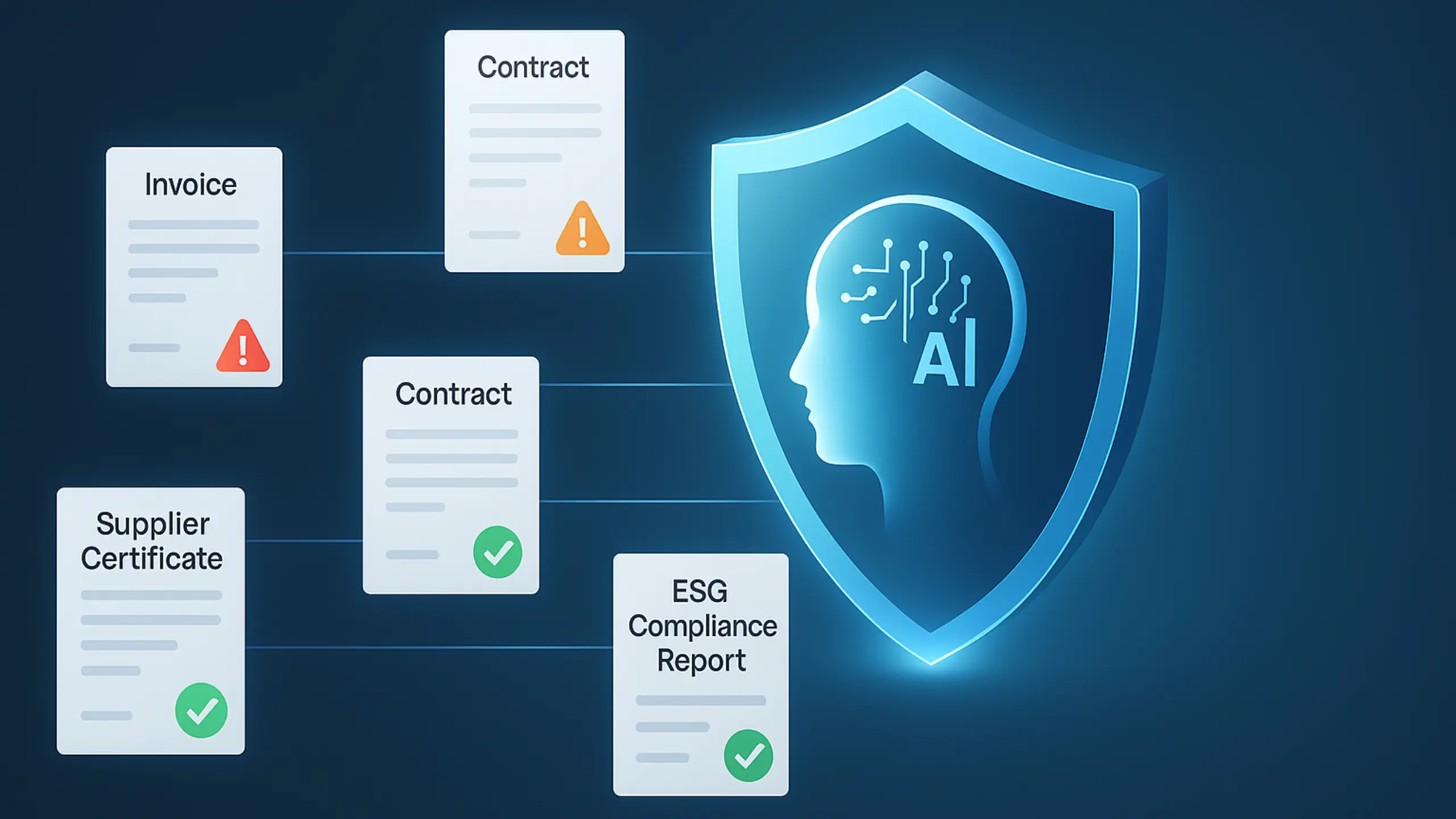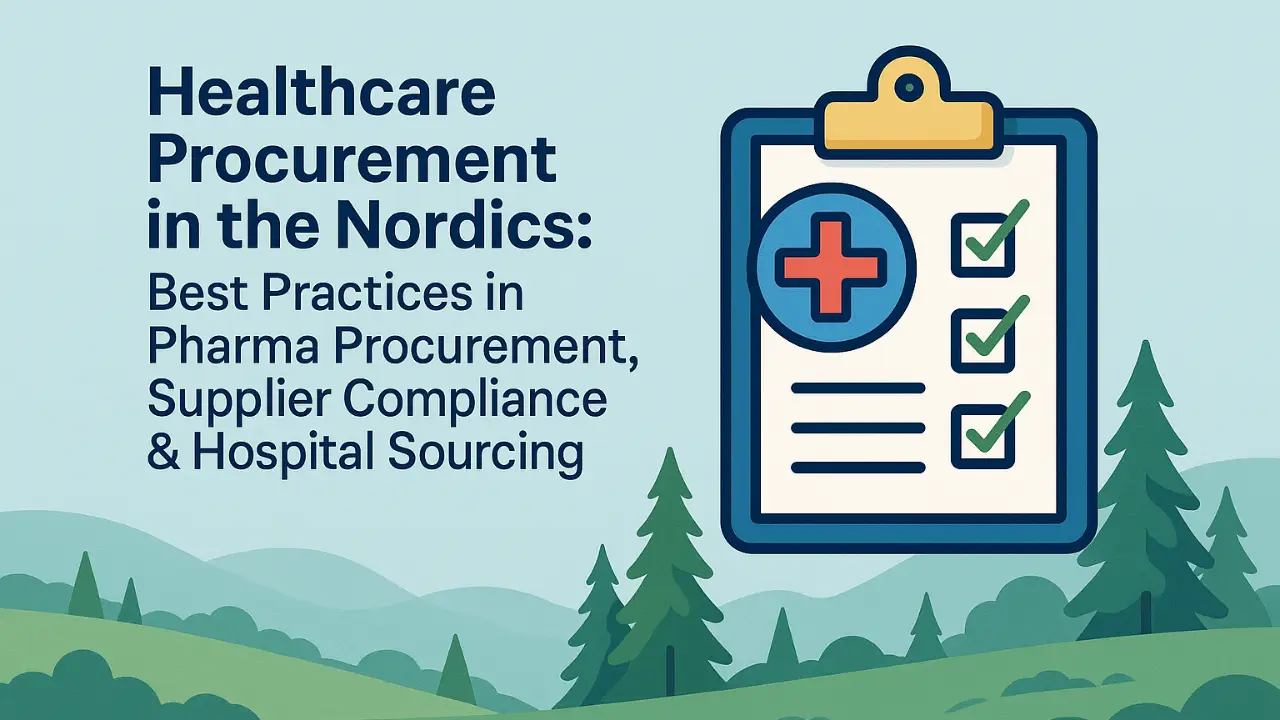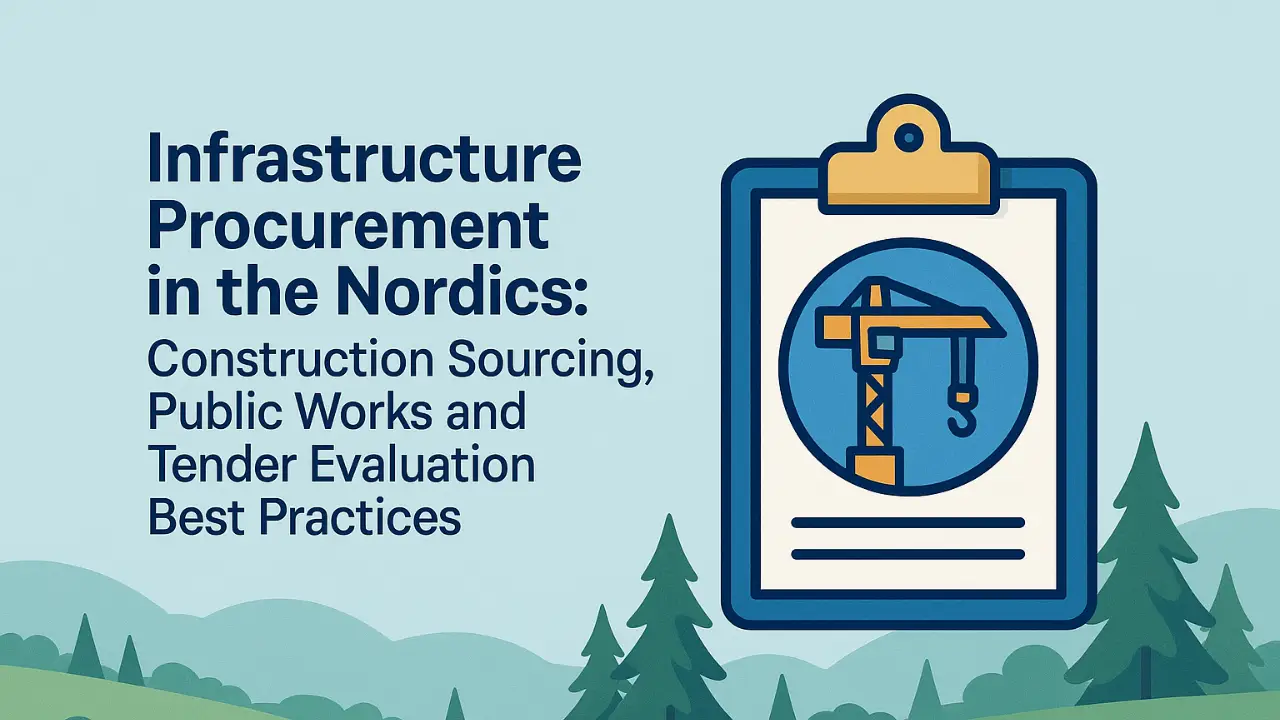If there’s one recurring theme in every executive conversation I’ve had this year, it’s this:
“Procurement is being treated as a strategic function, but we are still equipped like an operational one.”
Boards and business units now expect procurement to be a growth enabler, a risk governor, an ESG driver, a supplier-innovation partner and a real-time insights hub, not just a savings engine.
Yet the majority of procurement teams are still trapped in an operating model designed for a different decade.
Procurement isn’t broken — the Architecture is Outdated
Procurement workflows were built on a linear S2P model: initiate, source, contract, purchase, pay. That made sense when the goal was process governance and cost efficiency.
But the world shifted.
- Business demand now enters from 20+ channels, not a single funnel
- Suppliers aren’t just vendors — they’re co-creators of innovation
- ESG and risk aren’t “added criteria,” they’re table stakes
- Cycle time isn’t measured in weeks, it’s measured in business impact
- AI is no longer a future accelerator — it’s a present expectation
Procurement is trying to play a new strategic game while still using an old operational rule-book.
The new pressure isn’t technical — it’s organisational.
Here’s the real challenge: Most procurement leaders can articulate the future state. Very few have a pathway to build it.
Because today’s problems are not tactical.
- It’s not “we need a better sourcing tool.”
- It’s “we need one orchestration layer from intake to outcomes.”
- Not “we need AI to automate approvals.”
- But “we need AI that can reason, decide and act across the process.”
The issue isn’t capability — it’s clarity.
The blocker isn’t budget — it’s direction.
The risk isn’t failure — it’s standing still while the business outgrows procurement.
What’s really keeping procurement leaders awake:
- We’re still reactive instead of predictive
- We have data, but we don’t have decision-intelligence
- Workflows are automated, but outcomes are not
- Stakeholders want self-service, but we still route through intake chaos
- We talk about AI, but we haven’t operationalised it
And the deeper reality most won’t say out loud:
“Procurement isn’t slow because people don’t want change — it’s slow because the operating system wasn’t built for this level of responsibility.”
Statistics that Underline the Imperative
- According to Gartner, Inc., only 23% of supply-chain leaders report having a well-defined AI strategy in place across their organisation. (Source: Technology Magazine)
- Gartner also predicts that by 2027 50% of organisations will support supplier‐contract negotiations through AI-enabled tools. (Source: Gartner)
- The Hackett Group’s 2025 Procurement Agenda study shows that roughly 48% of teams anticipate increased purchase‐cost reduction this year, yet a productivity gap remains (~8.8%) suggesting technology spend is increasing without commensurate efficiency gains. (Source: Hackett Group)
- Hackett further reports that organisations they classify as “technologically advanced” deliver 96% higher savings than less advanced peers. (Source: supplychaindive.com)
- Forrester also shows that nearly 91% of business purchases stall at some point due to internal process issues (including procurement). (Source: Forrester)
These numbers underscore that many procurement teams are already under strain — expected to drive outcomes in a world they weren’t architected to serve.
The Strategic Shift: From S2P to I2O (Intake to Outcomes)
Forward-thinking organisations are realigning around a different question: “How do we design procurement around outcomes, not transactions?”
That shift requires:
- AI agents instead of static workflows
- Outcome-based orchestration instead of stage-based processes
- A single intelligence layer across intake, suppliers, contracts, risk and ESG
- Talent that can partner with the business, not just administer policy
And this is where the market is dividing:
✅ Those who are re-architecting now
❌ Those who are waiting for “the right time” (a time that won’t exist)
Where does Zycus PLaN Come in?
If this is the conversation you want to be part of — not tools, not feature lists, but operating-model redesign in a post-S2P world — then you may want to join us for PLaN 2025.
This isn’t a product pitch.
It’s a working forum on what comes after digital transformation — the shift to AI-enabled outcome orchestration.
- 18 November
- Virtual global symposium
- Leaders, analysts, practitioners — no “vendor-speak”
You can learn more and register here.
Related Reads:




















































